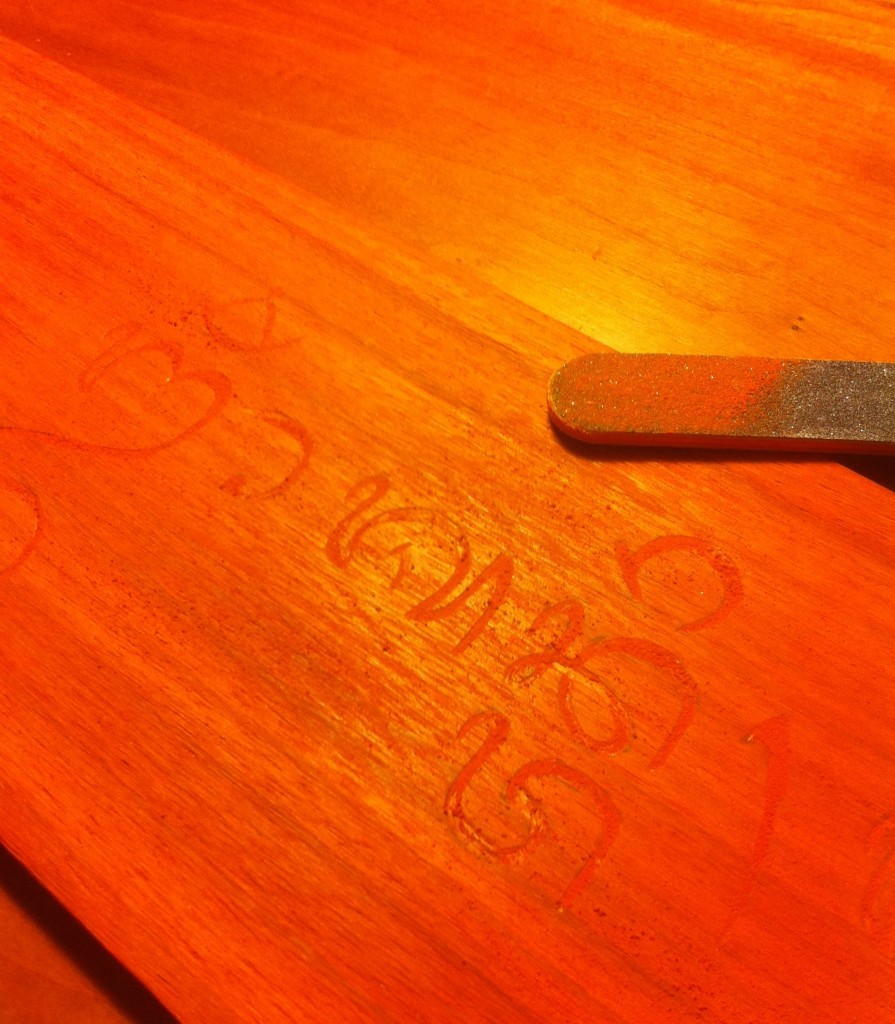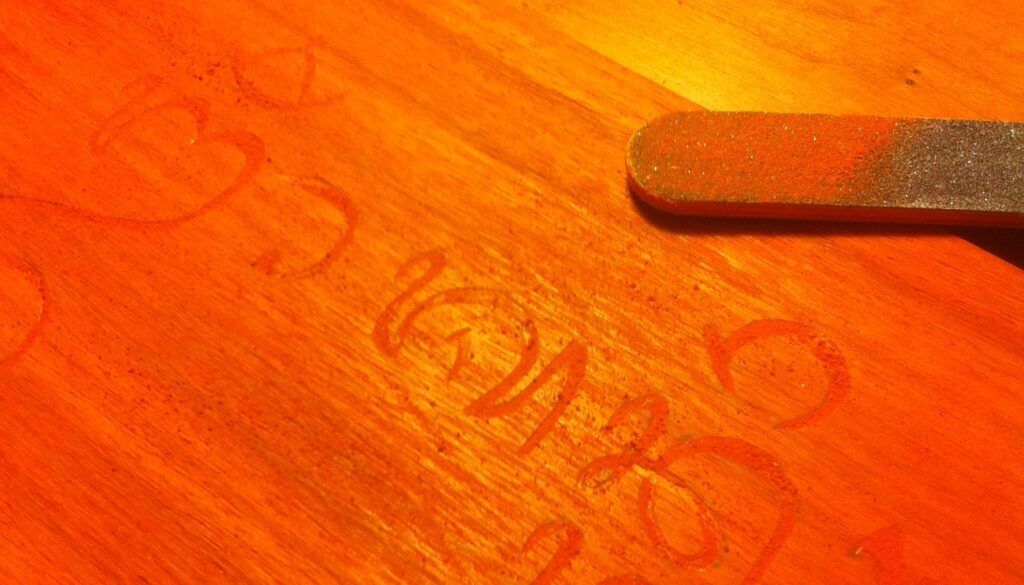Paduak

One of the most stunning woods in the world is paduak (pronounced pa-duke, at least in Vermont, and confusingly spelled “padauk” as often as not), an exotic tropical hardwood from central and West Africa and Southeast Asia. In its raw, sanded form it’s a brilliant tigerish orange striped with gold and darker reds and browns. With a coat of finish it can be blood-red, though in time it tends to darken and brown up. Yet as much as I love to look at it, it’s a bear to work with.
And work with it I do, because the final product is so irresistible. At the moment I’m doing a Kickstarter piece for the stellar Toronto guitarmaker Linda Manzer. Needless to say, I was looking forward to this piece with both excitement and a certain amount of dread, and on top of it all I decided I would try to describe exactly why it’s so hard of wood to work.
I set to carving with my smallest and sharpest gouges, and eventually came to the conclusion that paduak, for all its brilliance, just isn’t put together very well. If you carve with the grain, each individual fibre tends to detach, which you really, really don’t want. At one point I found myself working literally one fibre at a time to prevent the wood from splintering away from the curve I was trying to create.
Working across the grain has its own problems. The wood is so brittle that instead of slicing neatly across the fibres, the gouge seems to snap them off one by one. The wood is almost crystalline: instead of leaving a nice clean cut, the gouge snaps off each fibre at a breaking-point that may be a tenth of a millimeter away from the cutting-line. In other words, a jagged edge.
It finally hit me: it’s like carving a thin slab of orange sugar.

